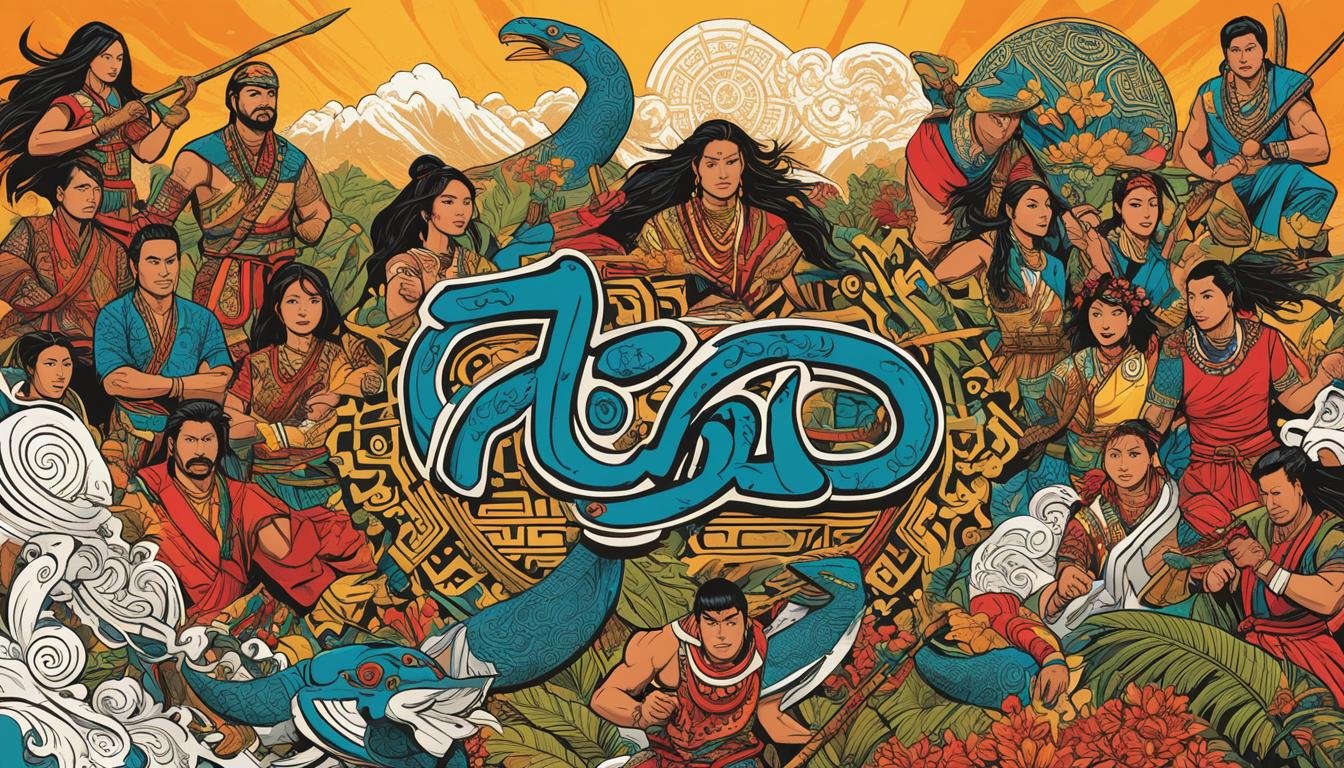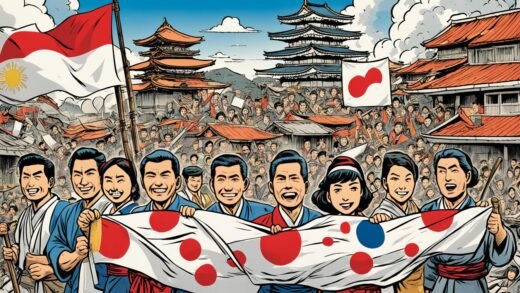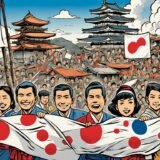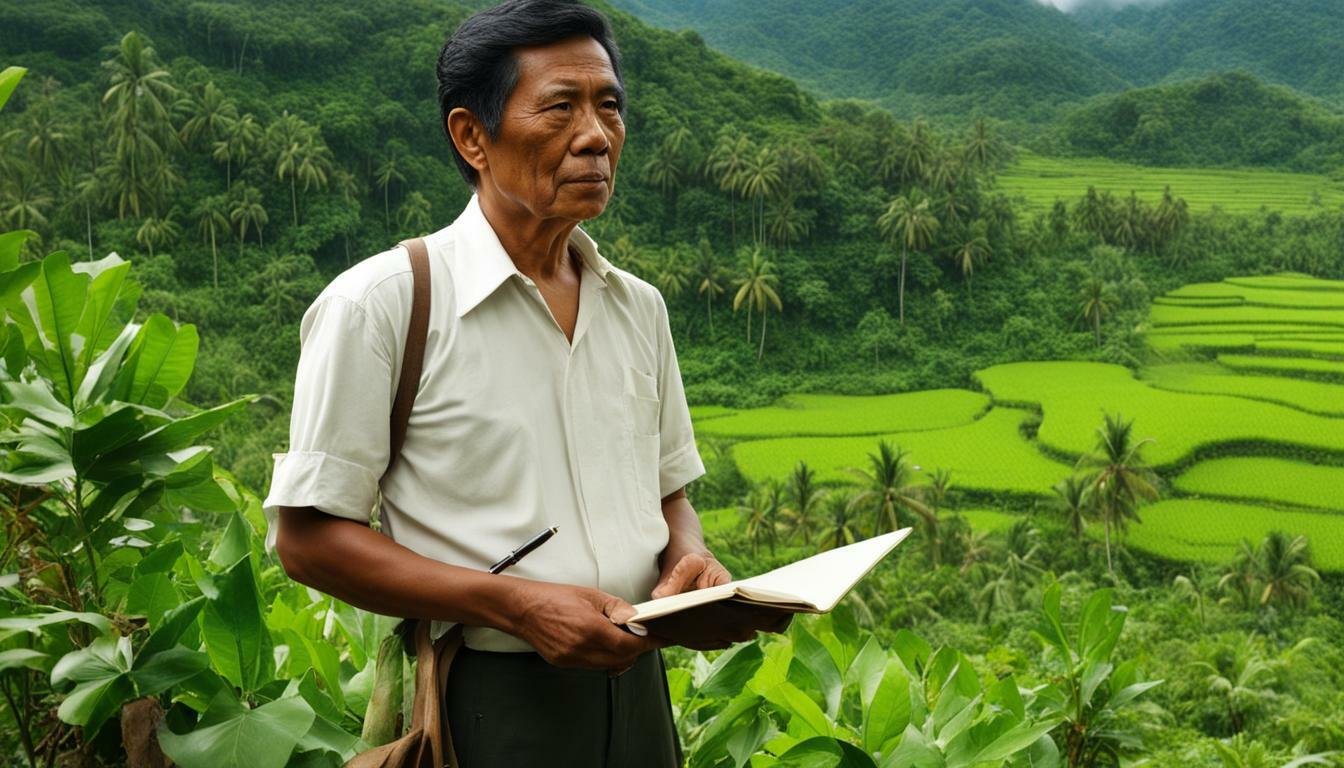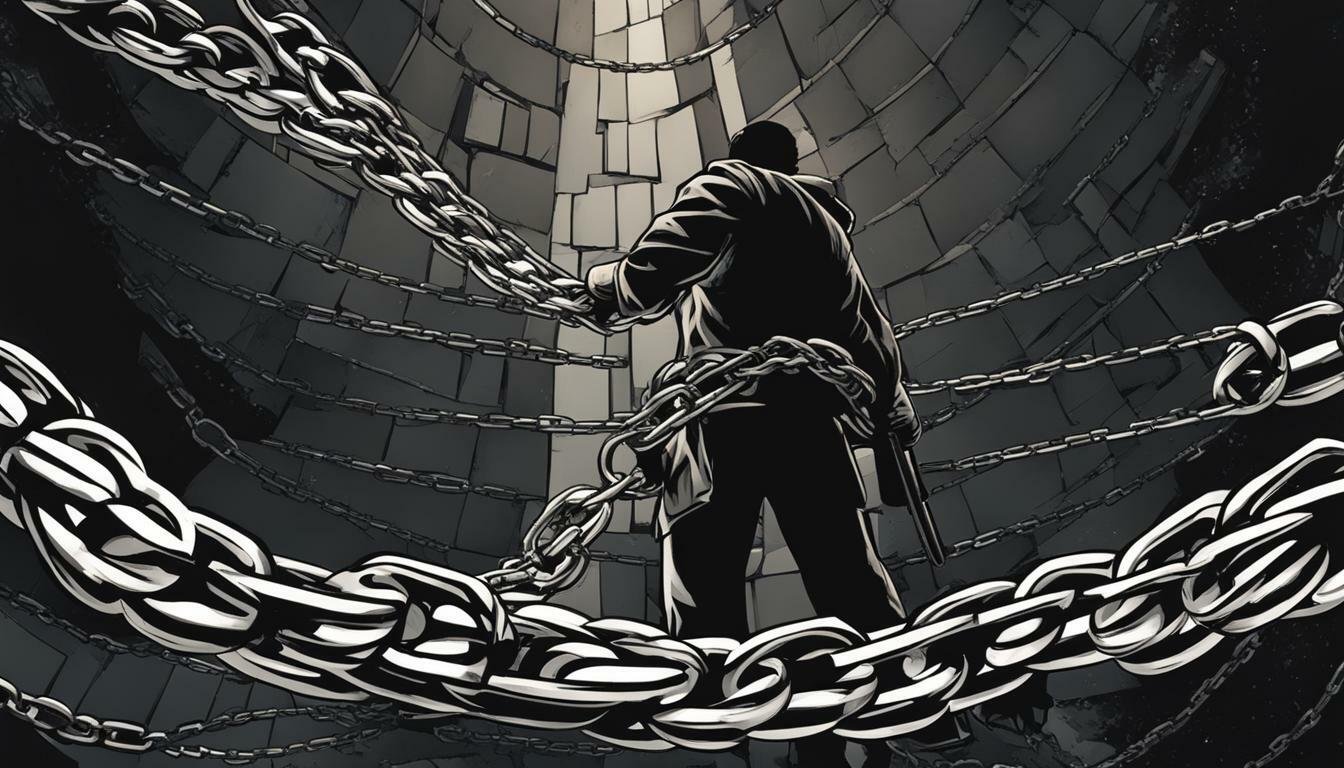Hanunó’o Language: Exploring the Linguistic Heritage of the Mangyan People in the Philippines
The Hanunó’o language is an integral part of the cultural and linguistic heritage of the Mangyan people, a group indigenous to the Philippines. This unique language holds deep historical significance, as it represents the identity and traditions of the Mangyan community.
The Hanunó’o language is primarily spoken in the Mangyan communities of Mindoro, an island in the Philippines. It is known for its distinct script, rich phonology, and diverse dialects, making it a fascinating subject of study for linguists and researchers.
In this article, we will delve into the roots, script, phonology, dialects, and modern usage of the Hanunó’o language. By understanding the intricacies of this language, we can gain a deeper appreciation for the linguistic and cultural heritage of the Mangyan people.
So join us as we embark on a journey to discover the beauty and significance of the Hanunó’o language, and how it continues to shape the identity of the Mangyan people in the Philippines.
Key Takeaways:
- The Hanunó’o language is spoken by the Mangyan people of the Philippines.
- It has a unique script, rich phonology, and diverse dialects.
- The language is primarily spoken in the Mangyan communities of Mindoro.
- Understanding Hanunó’o contributes to appreciating the linguistic and cultural heritage of the Mangyan people.
- The language continues to play a crucial role in shaping the identity of the Mangyan community.
Understanding the Roots of Hanunó’o Language
The Hanunó’o language is an integral part of the rich linguistic and cultural heritage of the Mangyan people in the Philippines. To truly appreciate this unique language, it is important to understand its roots and significance in the broader context of the Austronesian language family.
Origin and Language Family
The Hanunó’o language traces its origins back to the migration of Austronesian-speaking people to the Philippines thousands of years ago. The Austronesian language family encompasses a vast network of languages spoken by diverse communities across Southeast Asia and the Pacific. Hanunó’o belongs to this larger language family, highlighting the shared linguistic and cultural connections that exist within the region.
As a member of the Austronesian language family, the Hanunó’o language shares certain grammatical and phonological characteristics with other languages in the family. These similarities provide insights into the historical migration patterns and cultural interactions of Austronesian-speaking communities over the centuries.
By studying the Hanunó’o language within the context of its language family, researchers can gain a better understanding of the linguistic evolution and cultural dynamics shaping the unique traits and expressions found in Hanunó’o.
Significance in the Austronesian Language Tree
The Hanunó’o language holds great significance within the Austronesian language tree. It represents the distinct linguistic and cultural heritage of the Mangyan people, who have preserved their indigenous culture and traditions for generations.
Studying Hanunó’o provides valuable insights into the diversity of the Austronesian language family, showcasing the intricate variations and nuances that emerge among its branches. By understanding the roots of Hanunó’o, linguists and cultural scholars can contribute to the broader understanding of the Austronesian language tree and its role in shaping the cultural tapestry of the region.
Furthermore, the preservation and promotion of the Hanunó’o language underscore the importance of linguistic diversity in safeguarding the cultural heritage of indigenous communities like the Mangyan. By recognizing and embracing the linguistic roots of Hanunó’o, we can support the efforts to preserve and celebrate the unique identity of the Mangyan people.
The Unique Script of Hanunó’o Language
The Hanunó’o language, spoken by the Mangyan people in the Philippines, is traditionally written using the Hanunó’o script. This unique writing system evolved from the Kawi script, which originated in Java, Bali, and Sumatra. The Hanunó’o script holds significant cultural and historical value, playing a crucial role in preserving the linguistic heritage of the Mangyan community.
History and Evolution of Hanunó’o Orthography
The Hanunó’o script has a rich history that dates back centuries. It has undergone various changes and adaptations throughout its evolution. The script’s development can be traced to the influence of the Kawi script, which arrived in the Philippines through cultural exchanges with neighboring regions.
The Hanunó’o script has distinctive characteristics, with each character representing a syllable. It is written from left to right, following a linear arrangement. The script’s longevity and continued usage demonstrate its resilience as an essential part of Hanunó’o cultural identity.
Comparative Analysis with Other Philippine Scripts
The Hanunó’o script is just one of several indigenous writing systems found in the Philippines. A comparative analysis of the Hanunó’o script with other Philippine scripts, such as Baybayin and Tagbanwa, highlights the unique features and cultural significance of each script.
Baybayin, also known as the ancient Filipino script, was widely used before the Spanish colonization. It has a different set of characters and structures compared to the Hanunó’o script. On the other hand, Tagbanwa script, primarily used by the Tagbanwa people in Palawan, showcases distinct characteristics that distinguish it from the Hanunó’o script.
Through the comparative analysis of these scripts, we gain a deeper understanding of the diverse forms of written communication in the Philippines. This exploration of different scripts fosters appreciation for the cultural preservation of Philippine languages and their unique writing systems.

| Script | Distinctive Features | Usage |
|---|---|---|
| Hanunó’o script | Linear arrangement, syllabic characters | Traditional writing system for Hanunó’o language |
| Baybayin | Unique character set, distinct structures | Historical script used throughout the Philippines |
| Tagbanwa script | Specific letterforms and symbols | Writing system for Tagbanwa language |
An Overview of Phonology in Hanunó’o
Hanunó’o phonology is characterized by its consonant and vowel systems. Understanding the phonetic characteristics and variations within the language is essential in comprehending Hanunó’o’s unique sound patterns and linguistic variations.
Consonant and Vowel Systems
The consonant system in Hanunó’o comprises a range of sounds that play a significant role in distinguishing meaning between words. There are several consonant phonemes in the language, including p, t, k, b, d, and g. The table below provides an overview of the consonant system in Hanunó’o:
The vowel system in Hanunó’o consists of a set of distinct vowel sounds that contribute to the overall pronunciation and rhythm of the language. The vowel phonemes in Hanunó’o are a, e, i, o, and u. These vowels can be short or long, affecting the length and stress patterns of the words. The table below illustrates the vowel system in Hanunó’o:
Phonetic Characteristics and Variations
Hanunó’o exhibits several phonetic characteristics and variations due to regional dialects and individual speech patterns. The language showcases features such as nasalized vowels, glottal stops, and gemination of consonants, which contribute to its distinctive sound.
Additionally, some Hanunó’o speakers may demonstrate variations in pronunciation, influenced by factors such as age, education, and exposure to other languages. These variations highlight the dynamic nature of language and its ability to adapt and evolve over time.
Understanding the phonetic characteristics and variations in Hanunó’o is crucial for acquiring proficiency and appreciating the nuances of the language. It enables communication and provides insights into the rich linguistic heritage of the Hanunó’o people.
Geographical Distribution and Dialects
The Hanunó’o language is primarily spoken in the Mangyan communities of Mindoro, Philippines. These communities are located in various regions of Mindoro, including Oriental Mindoro and Occidental Mindoro.
The regional distribution of the Hanunó’o dialects is diverse, reflecting the geographical spread of the Mangyan communities. While the language shares many commonalities across different dialects, there are also distinct variations that allow for regional identification.
Here is an overview of the Hanunó’o dialects and their regional distribution:
Tayabas/Batan Dialect
The Tayabas/Batan dialect is spoken by the Mangyan communities in the northern part of Mindoro, particularly in the municipalities of Bongabong, Mansalay, and Naujan.
Alangan Dialect
The Alangan dialect is primarily spoken in the municipalities of Sablayan and Calintaan in Occidental Mindoro. This dialect is known for its unique phonetic characteristics and vocabulary.
Gubatnon Dialect
The Gubatnon dialect is spoken by Mangyan communities living near the coastal areas of Mindoro, particularly in the municipalities of Puerto Galera and San Teodoro. It is heavily influenced by the local Tagalog language.
Bansud Dialect
The Bansud dialect is predominantly spoken in the municipality of Bansud in Oriental Mindoro. It exhibits similarities to the Tayabas/Batan dialect, but with some notable differences.
Central Mindoro Dialect
The Central Mindoro dialect is a collective term for the dialects spoken in the central part of Mindoro, encompassing the municipalities of Naujan, Pola, Socorro, and Victoria. This dialect serves as a linguistic bridge between the different Hanunó’o dialects.
The regional distribution of Hanunó’o dialects reflects the rich linguistic diversity within the Mangyan communities and the influence of local languages in specific regions. Understanding these dialectal variations is crucial for language preservation and cultural appreciation.
# Please imagine the blank space to wrap an image. The following image should be in the center, not left and right, but in the center.

Techniques for Writing and Reading Hanunó’o Script
Writing and reading the Hanunó’o script requires specific techniques that have been passed down through generations. These techniques are closely tied to cultural practices and contribute to the preservation of the script’s rich heritage.
The Hanunó’o script is traditionally engraved onto bamboo using a knife. This process requires precision and skill to create the intricate characters of the script. The use of bamboo as a writing surface is significant because it is a sustainable and readily available material in the Mangyan communities where the script is used.
The knife used for inscribing the Hanunó’o script is not just a tool but a symbol of craftsmanship and artistry. This instrument is carefully crafted and often personalized, reflecting the individual identity of the scriptwriter.
Writing the Hanunó’o script on bamboo with a knife is not merely a mechanical act; it is an intimate and artistic expression of the Mangyan people’s cultural practices and identity.
Reading the Hanunó’o script also requires specific techniques. The characters of the script are read vertically, from top to bottom, and from left to right. This reading direction is deeply ingrained in the cultural traditions and practices of the Mangyan community.
As the Hanunó’o script is not widely known or used outside of the Mangyan communities, learning the script and its techniques is crucial for preserving this cultural heritage. Efforts are being made to document and teach the script to future generations, ensuring its continued practice and significance in the modern world.
By understanding and appreciating the techniques for writing and reading the Hanunó’o script, we can gain deeper insights into the cultural practices and traditions of the Mangyan people, while also contributing to the preservation of their linguistic heritage.
Learning Hanunó’o: Linguistic and Cultural Aspects
To fully grasp the essence of Hanunó’o language, learners must immerse themselves in its linguistic and cultural aspects. The acquisition of literacy in Hanunó’o plays a crucial role in preserving the rich heritage of the Mangyan people. By engaging with the language, learners not only gain proficiency but also contribute to the perpetuation of Mangyan culture.
Acquiring Literacy in Hanunó’o Among the Mangyan
For the Mangyan community, Hanunó’o literacy is a vital aspect of their identity and heritage. The process of acquiring literacy in Hanunó’o is deeply ingrained in their cultural practices. Young Mangyan children are introduced to the language through oral storytelling and listening to elders. As they grow older, they transition to learning the Hanunó’o script, which is passed down from generation to generation.
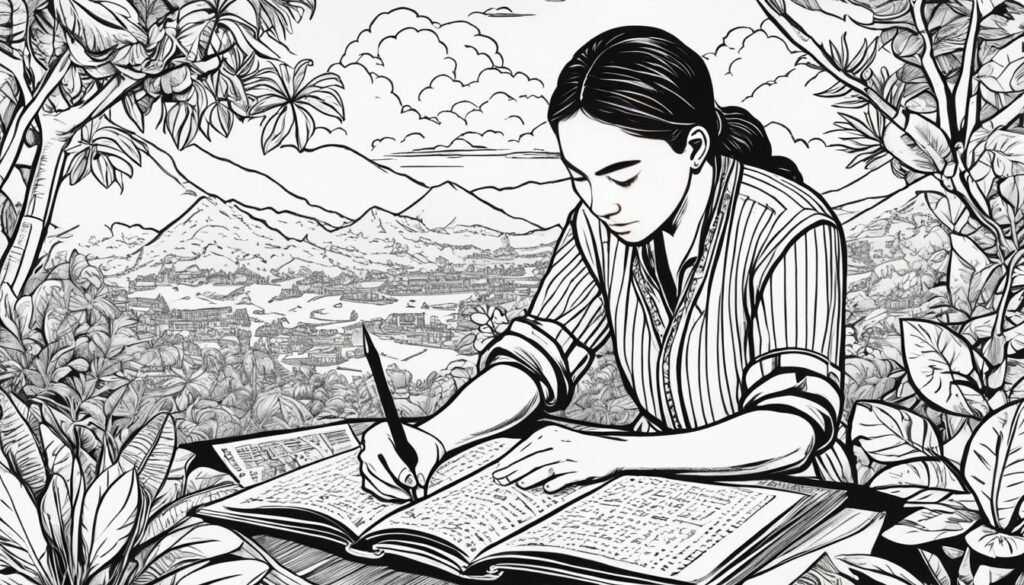
The learning process involves close interactions with elders, who guide the younger generation in understanding the intricacies of the Hanunó’o script. Traditional practices, such as inscribing characters on bamboo using a knife, are incorporated to enhance the learning experience. This hands-on approach fosters a deeper connection between learners and the script, strengthening their grasp of Hanunó’o language.
Role of Language in Preserving Mangyan Heritage
Hanunó’o language serves as a guardian of the Mangyan heritage, allowing the preservation of their cultural identity. Language acts as a vessel for transmitting knowledge, traditions, and values from one generation to another. By engaging in Hanunó’o language learning, the Mangyan people ensure the continuity of their rich cultural heritage.
“Language is the key to preserving our traditions and keeping our cultural flame alive. Through Hanunó’o language, we honor our ancestors and ensure that our unique Mangyan heritage thrives for generations to come.” – Elder Mangyan speaker
Hanunó’o language carries with it a profound sense of community and belonging. By actively participating in language learning, Mangyan individuals strengthen their cultural identity and deepen their connection to their ancestors. This connection fosters a sense of pride and instills a shared responsibility among the Mangyan community to preserve their linguistic and cultural heritage.
The importance of language in preserving Mangyan heritage extends beyond cultural preservation. It also plays a role in raising awareness and fostering respect for the diversity of Indigenous languages and cultures. By valuing Hanunó’o language and supporting Mangyan literacy efforts, society at large contributes to the recognition and celebration of linguistic diversity in the Philippines.
Hanunó’o Language in Modern Times
The Hanunó’o language continues to be used in modern times, serving as an essential means of communication for the Mangyan people. However, it faces various challenges that impact its usage and preservation.
Current Usage and Challenges
Despite efforts to preserve the Hanunó’o language, its usage has declined over the years. This decline can be attributed to several factors:
- The influence of dominant languages: The prevalence of national and regional languages has led to a decrease in the everyday use of Hanunó’o among the younger generation.
- Socioeconomic factors: Economic opportunities and urbanization have created a shift towards languages that are deemed more advantageous in educational and professional settings.
- Language stigmatization: Hanunó’o has sometimes been viewed as a language associated with rural or marginalized communities, leading to negative perceptions and reduced motivation for its use.
These challenges pose a threat to the vitality of the Hanunó’o language and the cultural heritage it represents.
Efforts for Revitalization and Education
To address the challenges facing the Hanunó’o language, various revitalization and education initiatives have been implemented:
- Linguistic documentation and preservation: Scholars and linguists have conducted research and documentation projects to collect and preserve Hanunó’o language resources, including recording oral traditions, creating dictionaries, and documenting grammar and syntax.
- Community-based language programs: Local communities and organizations have initiated language programs to promote the use of Hanunó’o within Mangyan communities. These programs focus on language revitalization through language classes, cultural events, and intergenerational language transmission.
- School curriculum integration: Efforts have been made to integrate the Hanunó’o language into the formal education system, ensuring its inclusion in school curricula, textbooks, and language instruction materials. This helps to create opportunities for Hanunó’o-speaking children to learn and use their native language in an educational context.
- Technology-enabled language learning: The use of digital tools and resources, such as smartphone apps, online courses, and interactive websites, provides accessible platforms for learning Hanunó’o, especially for the younger generation.
Through these revitalization and education initiatives, there is hope for the preservation and revitalization of the Hanunó’o language, enabling future generations to continue embracing their linguistic and cultural heritage.
Digitization and the Future of Hanunó’o Language
With the advancement of technology, there are opportunities for digitizing the Hanunó’o script and ensuring its preservation for future generations. Technological advancements in the field of linguistics and language preservation have opened new possibilities for the digitization of indigenous scripts, including the Hanunó’o script.
Digitization offers several benefits for the preservation and promotion of the Hanunó’o language. By converting the script into digital formats, it becomes more accessible and can reach a wider audience. This enables the language to transcend geographical boundaries and reach individuals who may not have had exposure to traditional scripts.
The digitization of the Hanunó’o script also facilitates language learning and documentation. Digital platforms and applications allow for interactive and immersive language learning experiences, incorporating audio, visual, and interactive elements. This enhances engagement and makes the language learning process more engaging and effective.
Furthermore, digitization provides opportunities for language preservation and revitalization. By creating digital archives and databases, linguistic scholars and researchers can store and analyze vast amounts of Hanunó’o language data, including texts, recordings, and linguistic analysis. This, in turn, contributes to a deeper understanding of the language and its linguistic features.
The digitization of the Hanunó’o script also allows for the creation of digital resources such as online dictionaries, grammar guides, and language learning materials. These resources can be easily accessed by language learners, teachers, and researchers, fostering the preservation and continued use of the Hanunó’o language in both traditional and modern contexts.
However, it is important to strike a balance between digitization and the preservation of cultural practices associated with the Hanunó’o script. While technology offers significant advantages, it is essential to ensure that traditional writing techniques and cultural practices are not lost in the process. Preserving the authenticity and cultural significance of the Hanunó’o script should be a priority in any digitization efforts.
In conclusion, digitization presents a promising avenue for the future of the Hanunó’o language. Through technological advancements, the digitization of the Hanunó’o script offers opportunities for language preservation, revitalization, and increased accessibility. By embracing these advancements while also honoring the cultural traditions associated with the script, we can ensure the continued existence and relevance of the Hanunó’o language in the digital age.
Conclusion
In conclusion, the Hanunó’o language plays a vital role in the linguistic and cultural heritage of the Mangyan people. With its unique script, diverse phonology, and rich variety of dialects, the Hanunó’o language represents a treasure trove of cultural significance.
By understanding and preserving the Hanunó’o language, we can ensure the continuity of the Mangyan people’s rich cultural heritage. It allows us to appreciate the depth and beauty of their traditions, stories, and oral history, intricately woven into the fabric of the language.
The Hanunó’o language also contributes to linguistic diversity, showcasing the unique linguistic characteristics within the Austronesian language family. It reminds us of the importance of protecting and celebrating the multitude of languages that enrich our world.
As we navigate the challenges of the modern world, we must recognize the significance of the Hanunó’o language and support efforts for its revitalization and education. Through technological advancements, such as digitization, we can ensure the preservation and accessibility of the Hanunó’o script for future generations.
FAQ
What is the Hanunó’o language?
The Hanunó’o language is a unique language spoken by the Mangyan people in the Philippines. It is known for its rich cultural and linguistic heritage.
Where does the Hanunó’o language originate from?
The Hanunó’o language has its roots in the Austronesian language family and is believed to have originated from the migration of Austronesian-speaking people to the Philippines thousands of years ago.
How is the Hanunó’o language traditionally written?
The Hanunó’o language is traditionally written using the Hanunó’o script, a unique writing system that developed from the Kawi script of Java, Bali, and Sumatra.
What are the phonological characteristics of the Hanunó’o language?
Hanunó’o phonology is characterized by its consonant and vowel systems. It has a unique set of consonant and vowel sounds, with specific phonetic characteristics and variations.
Where is the Hanunó’o language primarily spoken?
The Hanunó’o language is primarily spoken in the Mangyan communities of Mindoro, Philippines.
What techniques are used for writing and reading Hanunó’o script?
Writing and reading the Hanunó’o script require specific techniques, such as using a knife to inscribe characters on bamboo. These techniques are deeply rooted in the cultural practices associated with the script.
How can one learn the Hanunó’o language?
Learning the Hanunó’o language involves linguistic and cultural aspects. It contributes to Mangyan literacy and the preservation of their rich heritage. There are specific processes involved in acquiring literacy in Hanunó’o among the Mangyan, emphasizing the role of language in preserving their cultural identity.
What are the current challenges faced by the Hanunó’o language?
The Hanunó’o language faces challenges in terms of usage and preservation. However, efforts are being made for revitalization and education to ensure its continued use and preservation.
What is the potential of digitizing the Hanunó’o script?
With the advancement of technology, there are opportunities for digitizing the Hanunó’o script and ensuring its preservation for future generations. Digitization can have a significant impact on the future of the Hanunó’o language.











